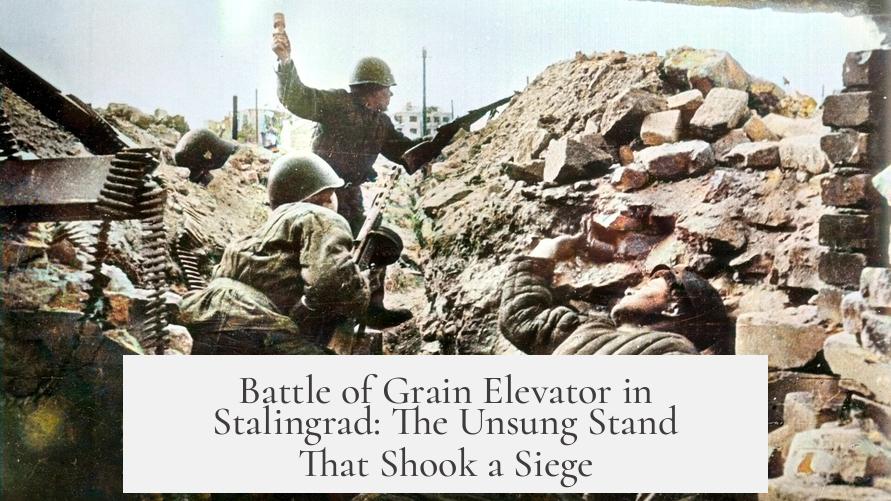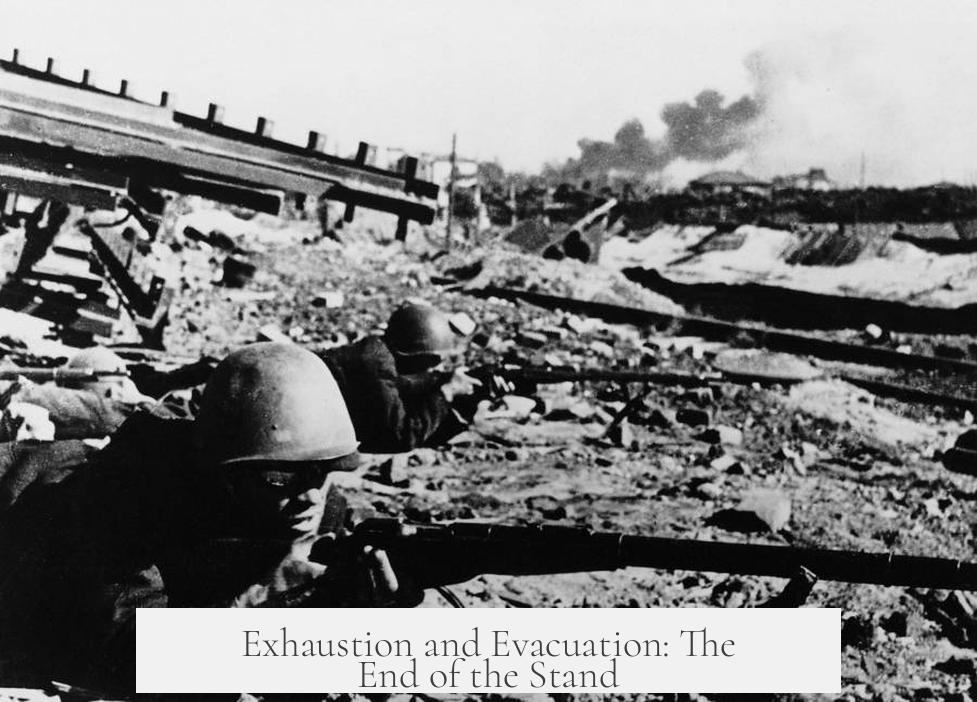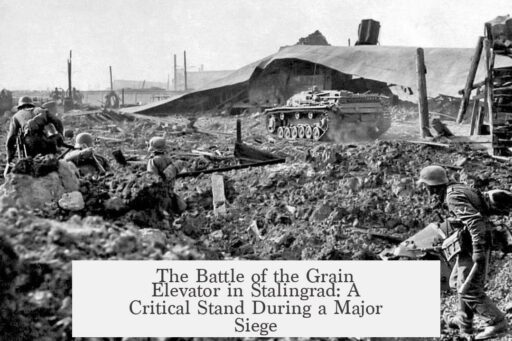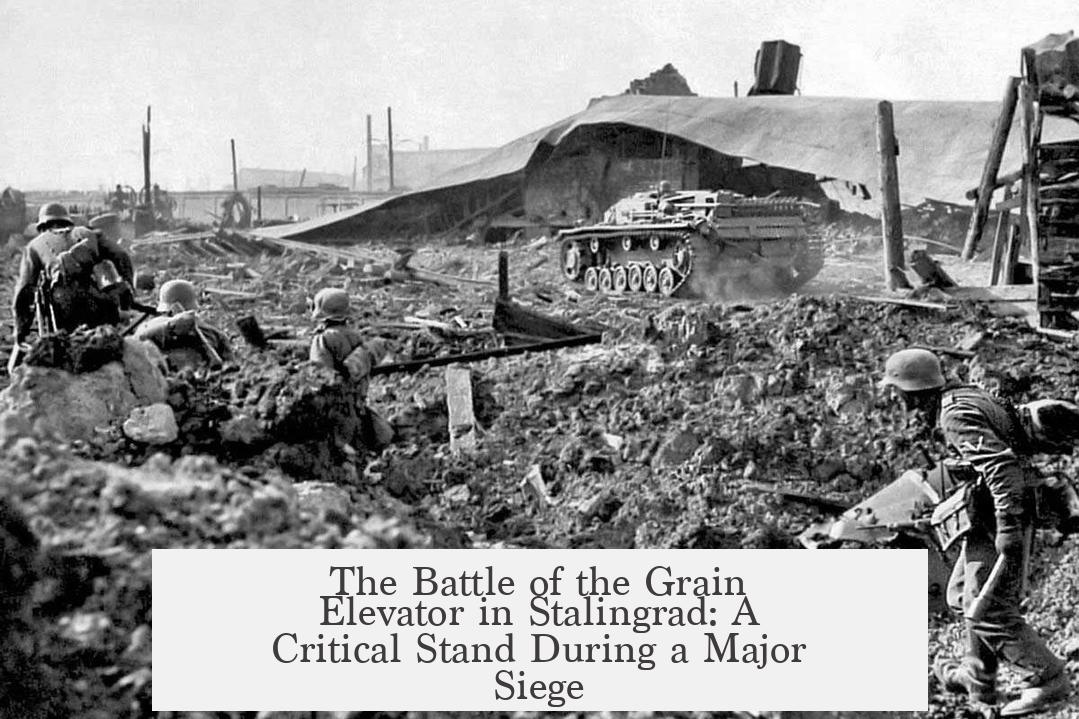The Battle of the Grain Elevator in Stalingrad stands as a significant episode of fierce defense and strategic resistance during the broader conflict. Despite being isolated by the rapid advance of the XLVIII Panzer Corps on September 14th, the defenders held their ground under extreme conditions for over a week.
The grain elevator was cut off from other Soviet forces as the XLVIII Panzer Corps, part of Hermann Hoth’s Fourth Panzer Army, sought to clear the west bank of the Volga south of the Tsaritsa Gorge. The initial defenders were a small group, but on the night of September 17th, a platoon of naval infantry reinforced them, bringing their strength to about fifty soldiers.
Armed with only two outdated Maxim machine guns and two anti-tank rifles, the defenders showed remarkable resilience. On September 18th alone, they repelled ten German assaults. This intense combat occurred without access to water and amid thick dust and smoke from burning grain, greatly worsening their situation.
By September 22nd, the Soviet defenders had exhausted all grenades and anti-tank ammunition. The Germans succeeded in breaking into the grain elevator that night, prompting the defenders to evacuate under cover of darkness. The German forces discovered around forty dead and wounded defenders within the silo, a small number compared to the value of delaying the Panzer division.
The resistance at the grain elevator delayed the German 94th Infantry Division for days, proving tactically costly for the attackers. This delay had a broader strategic impact. It allowed the Soviet forces to maintain control of the nearby landing stage at Red Square. More importantly, it ensured that supplies could continue crossing the Volga River from Krasnaya Sloboda, sustaining the Soviet defense during the critical phases of the Battle of Stalingrad.
- The grain elevator defenders were isolated but reinforced by naval infantry, totaling about fifty men.
- Armed lightly, they resisted ten German assaults under harsh conditions on September 18th.
- They ran out of key ammunition by September 22nd, leading to evacuation after German breakthrough.
- Around forty Soviet casualties were found, but the defense delayed the German 94th Infantry Division significantly.
- This delay helped maintain Soviet supply routes across the Volga near Red Square.
Battle of Grain Elevator in Stalingrad: The Unsung Stand That Shook a Siege

What really happened during the Battle of the Grain Elevator in Stalingrad? Simply put, a small, outgunned Soviet force held off a much larger German mechanized unit for days in a brutal and desperate defense that became a key moment in the wider Battle of Stalingrad. But this was no ordinary fight. It was a fierce showdown packed with determination, harsh conditions, and impressive tactical grit.
If you think the iconic street-to-street fights or the sprawling factory battles stole all the spotlight at Stalingrad, think again. The grain elevator defense, while less glamorous, proved pivotal in delaying German forces and allowing Soviet reinforcements to keep supply lines open across the Volga River. Let’s unpack this gritty episode.
Cut Off and Under Pressure: The Isolation Begins
On September 14th, 1942, the grain elevator—a huge concrete silo storing tons of grain—found itself suddenly isolated. Why? Because XLVIII Panzer Corps, part of Hermann Hoth’s aggressive Fourth Panzer Army, surged forward to clear the west bank of the Volga, targeting positions south of the Tsaritsa Gorge.
Imagine being trapped in a massive grain tower, cut off by a relentless armored force. The defenders, initially few, got a morale boost on the night of the 17th when a platoon of naval infantry sneaked in to reinforce their position. This brought the garrison’s total to around fifty soldiers.
Fifty men against an undeterred Panzer Corps? Sounds like David versus Goliath with fewer slingshots and more stubborn willpower.
Limited Weapons, Unlimited Resolve
Now, the defenders weren’t exactly armed to the teeth. Their arsenal included just two ancient Maxim machine guns and a pair of anti-tank rifles—hardly enough to repel a mechanized assault.
But on September 18th alone, these brave souls repelled no less than ten German assaults. What makes their feat even more remarkable is the brutal environment they fought in: choking dust and smoke from burning grain clouds, no water, and the kind of exhaustion that saps every last bit of strength.
It’s hard to imagine holding a position under those conditions. No clean air, no hydration, and fire everywhere. Yet, despite it all, they fought back relentlessly. It’s a testament not just to their tactical defense but to sheer human grit.
Exhaustion and Evacuation: The End of the Stand

But even heroes run out of ammo and resources. By September 22nd, the defenders had expended every grenade and anti-tank projectile. The Germans finally broke inside the grain elevator. With no alternative, the surviving defenders evacuated during the night.
What happened next is telling: the Germans only found about forty dead and wounded in the silo, a surprisingly low number given the ferocity of the battle and its length.
The Bigger Picture: Why This Minor Battle Mattered
| Strategic Impact | Explanation |
|---|---|
| Delay of German 94th Infantry Division | The grain elevator defense kept the entire 94th Infantry Division stuck for days, slowing their advance at a crucial time. |
| Maintaining Soviet supply lines | The delay allowed the Soviets to hold onto the landing stage near Red Square, enabling continuous supply deliveries across the Volga from Krasnaya Sloboda. |
In essence, what looks like a small tactical defeat turned into a strategic Soviet victory. The defenders bought precious time to keep the city’s lifeline alive. Without that, Stalingrad’s fate could have been sealed much earlier.
Lessons and Reflections from the Grain Elevator Battle
What can modern readers learn from this? Here are some surprising takeaways:
- Numbers aren’t everything. A small group, well-positioned and motivated, can stall a much larger foe.
- Location matters. The grain elevator wasn’t just a storage facility; it was a fortress with strategic value because of its location on the Volga’s west bank.
- Morale and tenacity trump technology—sometimes. Despite old weapons and scarce resources, the defenders’ spirit was razor-sharp.
- Delays equal survival. The prolonged defense shifted momentum in the larger battle, underlining how time buys options in war.
It’s tempting to dismiss small battles like this as footnotes, but they often contain the real stories of human determination and strategic chess moves that unfold beneath the grand narratives.
Final Thought: Could You Hold a Grain Elevator Under Siege?
Picture yourself trapped inside a towering concrete silo, surrounded by burning dust, enemies at the gates, armed only with ancient machine guns and anti-tank rifles. No water, no reinforcements in sight except a handful of comrades. How long would your resolve last? Would you hold out in the face of overwhelming odds?
The defenders of the Grain Elevator in Stalingrad not only held out—they carved a space in history as a stubborn obstacle that delayed the Nazis and helped save a city. Their courage is a powerful reminder of how even the smallest fights can have outsized effects in times of crisis.
Next time you hear about Stalingrad, don’t just think of tanks and factories. Remember the grain elevator—and those fifty fearless defenders who made history from inside a giant silo.
What was the initial situation at the grain elevator in Stalingrad?
The grain elevator was cut off on September 14th by the XLVIII Panzer Corps. This unit was trying to clear the west bank of the Volga south of the Tsaritsa Gorge.
How were the defenders at the grain elevator reinforced?
On the night of September 17th, a platoon of naval infantry arrived, boosting the defenders’ numbers to about fifty.
What armaments did the defenders have during the battle?
They had two old Maxim machine guns and two anti-tank rifles. Despite this, they repelled ten assaults on September 18th.
Why was the battle for the grain elevator significant?
The resistance delayed the German 94th Infantry Division for days. This allowed Soviet forces to maintain supply lines across the Volga.
What happened to the defenders after the Germans broke into the grain elevator?
By September 22nd, the defenders ran out of grenades and anti-tank ammo. The Germans broke through, and the surviving defenders evacuated during the night.




